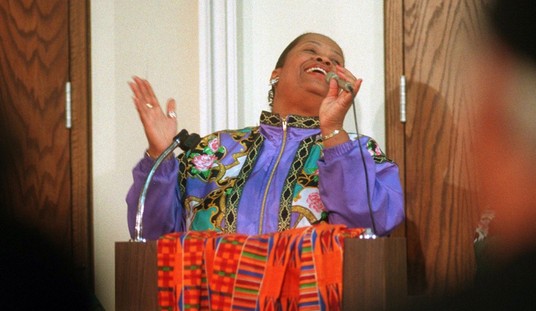A recent change in terminology by the National Association of Medical Examiners (NAME) regarding deaths in police custody may have significant implications for law enforcement and members of the communities they police. The organization has advised against citing “excited delirium” as a cause of death and instead encourages determining the underlying cause of the delirious state.
While not legally binding, this guidance undermines the concept of excited delirium, which is often used to describe a state of extreme agitation or distress resulting from drug use, potentially leading to cardiac arrest. It has also been commonly used to shield police officers from accountability when they overstep their boundaries.
In a statement, NAME explained:
Although the terms “Excited Delirium” or “Excited Delirium Syndrome” have been used by forensic pathologists as a cause of death in the past, these terms are not endorsed by NAME or recognized in renewed classifications of the WHO [World Health Organization], ICD-10 [International Classification of Diseases], and DSM-V [Diagnostic and Statistical Manual of Mental Disorders]. Instead, NAME endorses that the underlying cause, natural or unnatural (to include trauma), for the delirious state be determined (if possible) and used for death certification.
But what exactly is excited delirium, and what are the issues with it?
Excited delirium is a controversial term used to describe a state of extreme agitation, distress, and altered mental status exhibited by individuals in certain situations. It is often associated with illicit drug use, such as stimulants like cocaine or methamphetamine. Those experiencing excited delirium may exhibit symptoms such as heightened strength, intense sweating, paranoia, confusion, hallucinations, and violent behavior.
The condition has been linked to sudden and sometimes fatal outcomes, including cardiac arrest. However, there is ongoing debate about the legitimacy and medical basis of excited delirium as a distinct diagnosis, with critics arguing that it is a vague and subjective concept that has been used to justify excessive force by law enforcement or to absolve responsibility in cases involving deaths in police custody.
Supporters argue that it is a real and potentially life-threatening condition, while critics contend that it is a loosely defined concept used to justify excessive force and evade accountability. In this article, we will explore both sides of the excited delirium debate to gain a comprehensive understanding of the issue.
This condition has arisen in a myriad of cases involving law enforcement:
Elijah McClain was diagnosed with “excited delirium” by paramedics in Aurora, Colorado. McClain was placed in a carotid hold by police and injected with ketamine when paramedics arrived. The medics never checked the 23-year-old Black man’s vital signs, talked to him or touched him before making the diagnosis, a Colorado grand jury found. McClain was declared brain dead three days later.
And “excited delirium” was among the causes of death listed for Daniel Prude in Rochester, New York, along with complications of asphyxia in a setting of physical restraint and acute PCP intoxication, according to a medical examiner’s report. The 41-year-old Black man was having a mental health emergency in 2020 when officers covered his head with a mesh hood and held him prone on the ground before he stopped breathing. He was declared brain dead and died a week later.
According to the American College of Emergency Physicians, officers are cautioned to look for signs of “superhuman strength” and “police non-compliance” as indicators someone might be suffering from excited delirium. It also lists “agitation,” “pain tolerance,” and being “inappropriately clothed” as other indications.
Proponents of the use of the term argue that it is a legitimate medical condition. They emphasize that certain factors, such as illicit drug use or mental health disorders, can contribute to the onset of this state. According to this view, excited delirium can result in dangerous behaviors that pose a threat to both the affected individuals and those around them. Supporters claim that recognizing excited delirium as a distinct condition helps law enforcement and medical professionals understand and respond appropriately to these situations, potentially preventing harm or loss of life.
On the other hand, critics point out that the symptoms associated with excited delirium, such as agitation and enhanced strength, can be explained by other factors like drug intoxication or psychological distress. They also question its scientific validity and argue that it is a subjective, overly broad, and ill-defined term that is typically used as a catch-all to describe deaths involving law enforcement. Indeed, it appears to be a commonly-used diagnosis:
An Austin-American Statesman investigation into each non-shooting death of a person in police custody in Texas from 2005 to 2017 found that more than one in six of these deaths (of 289 total) were attributed to “excited delirium.” A January 2020 Florida Today report found that of 85 deaths attributed to “excited delirium” by Florida medical examiners since 2010, at least 62 percent involved the use of force by law enforcement. A Berkeley professor of law and bioethics conducted a search of these two news databases and three others from 2010 to 2020 and found that of 166 reported deaths in police custody from possible “excited delirium,” Black people made up 43.3 percent and Black and Latinx people together made up at least 56 percent.
Skeptics point out that excited delirium has been used disproportionately in cases involving deaths in police custody, often leading to controversial outcomes. They assert that invoking excited delirium as a cause of death can enable law enforcement or medical professionals to escape accountability for excessive force or inappropriate use of restraints. These folks emphasize the need for a more rigorous and evidence-based approach to determining the underlying causes of these incidents.
The excited delirium debate is further complicated by the lack of a universally accepted definition or diagnostic criteria. The absence of standardized protocols for assessing and managing excited delirium contributes to the uncertainty surrounding the condition. Critics argue that the subjective nature of the term allows room for bias and misinterpretation, leading to inconsistent reporting and potentially unjust outcomes. Supporters acknowledge the challenges but maintain that while the concept of excited delirium may lack clarity, the need to address situations involving extreme agitation and potential harm remains essential.
Another concerning aspect of recognizing excited delirium is that it can – and has – been abused by law enforcement. The term has been misused to absolve police officers or other state actors of accountability in incidents resulting in fatalities, as in the aforementioned cases. By invoking excited delirium, the focus shifts away from examining the actions of law enforcement and onto the alleged medical condition, allowing the responsible parties to evade scrutiny and legal consequences.
The debate will continue, but the fact that the National Association of Medical Examiners has abandoned the term represents a shift in the overall perception of excited delirium.












